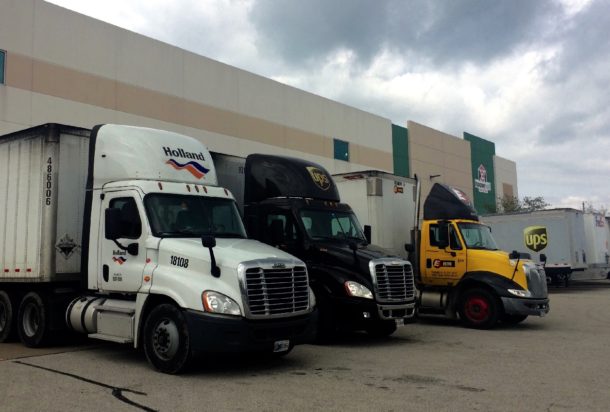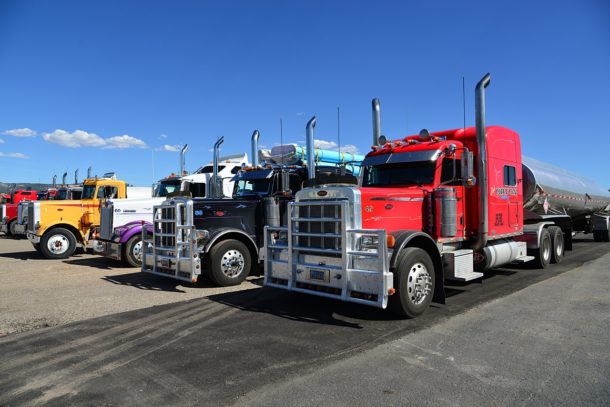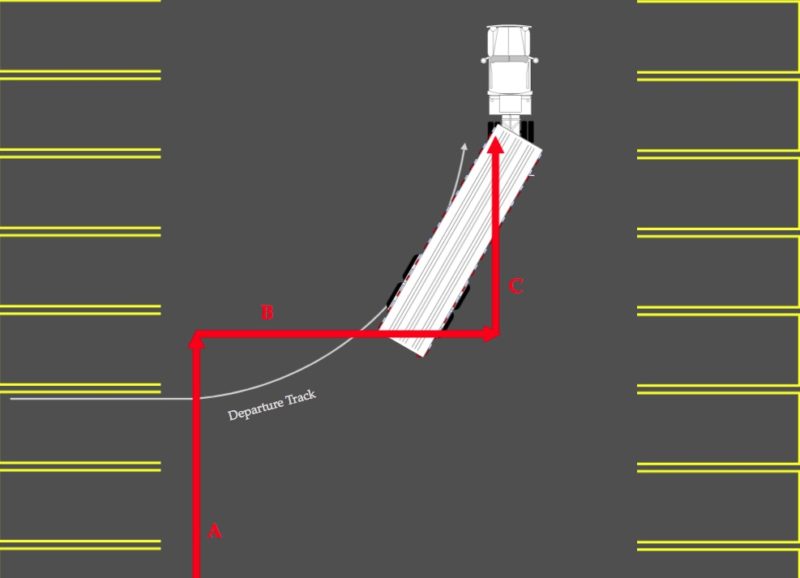
3 Legs of the Z Set-Up 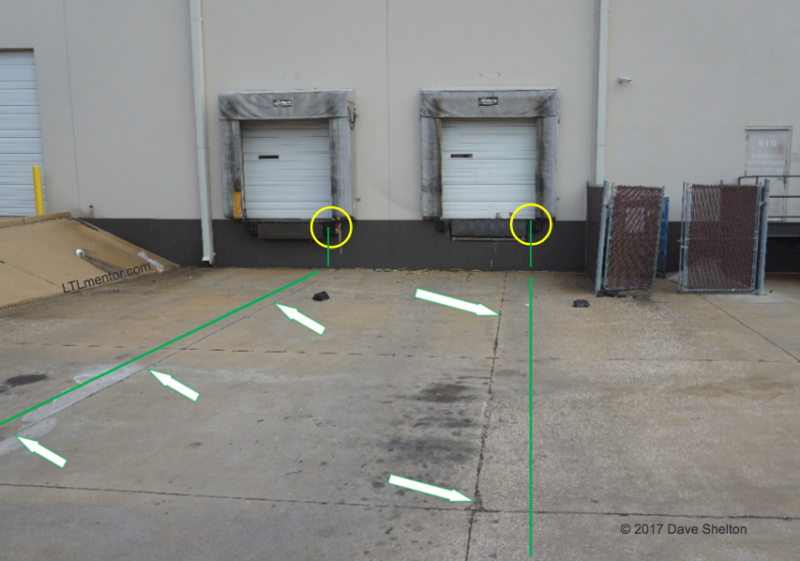
Seams make good tire targets. Green line – Trailer tire path. 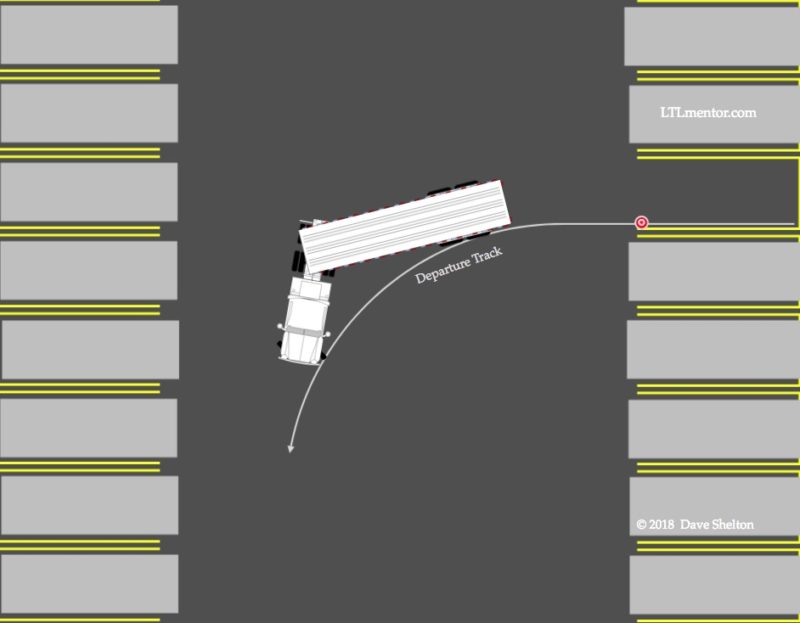
Trailer tires on a good path. From here get the tractor back in front of the trailer.
What exactly is the Set-Up?
A few years ago, I was encouraged to volunteer for my companies’ ‘Driver Mentoring’ program.
I soon learned that most students knew very little about and greatly underestimated the importance of a proper set-up.
I get looked at strangely sometimes when I ask a student, “What is the main goal of the Set-up?”. Unfortunately, most of the answers that I get are vague and incomplete.
“To get the trailer into the dock.”, is an answer I get often.
Yes. But how would you know if you performed an acceptable set-up vs. a bad one? They don’t know.
And, it is not their fault that they don’t know this.
When it comes to producing a new truck driver, the trucking industry typically works as follows:
Someone pays a Truck driving school thousands of dollars to help you get a CDL. They teach you everything you need to know for you to pass your test. The company that hires you will send you out with a trainer for 6-8 weeks to provide ‘on the job’ training. Then you will be tested by the company before going solo.
This student had finished truck driving school, passed his test, and had his CDL. He was doing good with his shifting and everything involved with driving the truck forward. But, was still struggling at times with Backing. He was very frustrated and stressed out because of it.
The Set-Up is much more critical than most beginners realize.
If you Set-Up wrong, you don’t stand a chance. It doesn’t matter how skilled the driver is. If I fail to set-up correctly, I will struggle. Don’t underestimate the importance of a proper Set-Up.
When I ask a student if they use a Set-Up method, they usually look at me confused.
Daryl, one of my early students, who had been out training with a few different mentors, expressed a lot of frustration and vented when I asked him about how he was doing with his Set-ups.
“Everyone keeps telling me, ‘You’re set-ups not right!’ But when I ask them what exactly does it mean to set-up right, they can’t give me a straight answer!”
Not being sure what it means to Set-Up correctly is a common complaint that I hear from students. I wouldn’t waste my time trying to teach a student how to back up until they understand how to Set-Up. These trucks take up a lot of space, and they have limitations. It is difficult to recover from a less than ideal Set-Up.
I decided the best thing for him to do on the first day was to sit in the passenger seat and observe me. The only focus would be Setting Up. I would verbalize my thoughts at every stop and tell him exactly what I planned to do and why I was doing it.
(Note: as an LTL “City” driver we cover a smaller area. Between deliveries and pick-ups, we may hit between 10 and 20 docks in a day.)
By the end of the day, he had seen numerous examples. I hoped that he would start to notice some patterns.
The most important fundamental.
You can’t be good at Backing until you are good at Setting Up. I have spent a lot of time thinking about what makes a proper Set-Up, and I have come up with some new ideas about how to teach it. I have received excellent feedback from my students. Hopefully, it will help you as well. It takes a little effort to learn, but I believe it will save you a lot of frustration.
What you need to know:
The 3 Legs to every Set Up
I call these legs A, B, and C. Each of the three legs has a particular purpose with a specific end goal in mind. It’s not complicated, but you will need to pay attention to details.
I use two different Set-Up methods. You can consider these to be routes.
Think of a set play in football. You can quickly memorize these routes, and they will help you gain some much-needed consistency in your Set-Up.
The first Set-Up and the one you will use most often is the “Z” Set-Up. Most sight-sided Set-Ups use some form of this.
The second Set-Up route I call the “Hangman.” You will use this less often, but it will come in handy in certain situations. It’s easy to learn and can save you from having to do a blind-side when Setting Up to a space on your passenger side.
Both methods are made up of three legs, A, B, and C.
I will introduce you to a new concept:
Departure Paths.
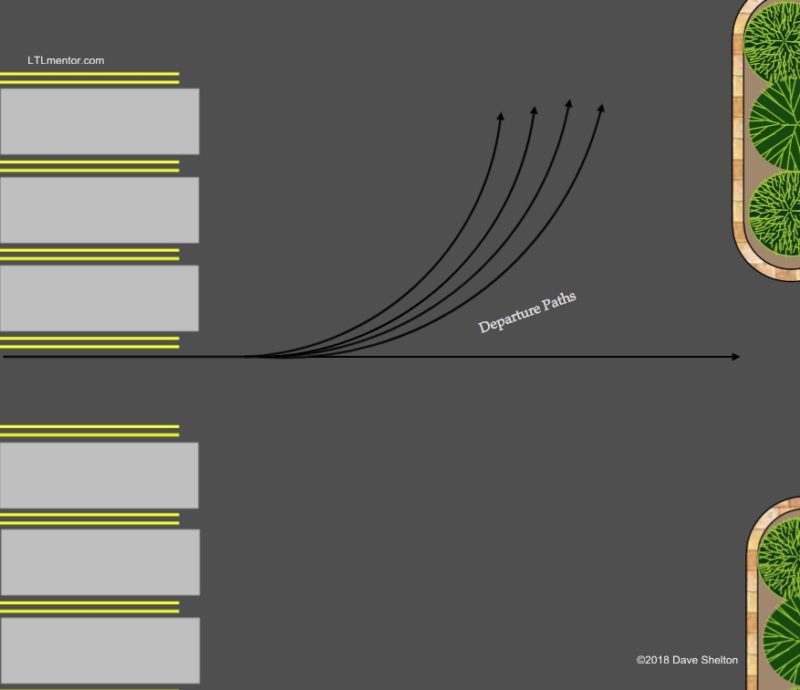
Trailer tire Set-Up paths 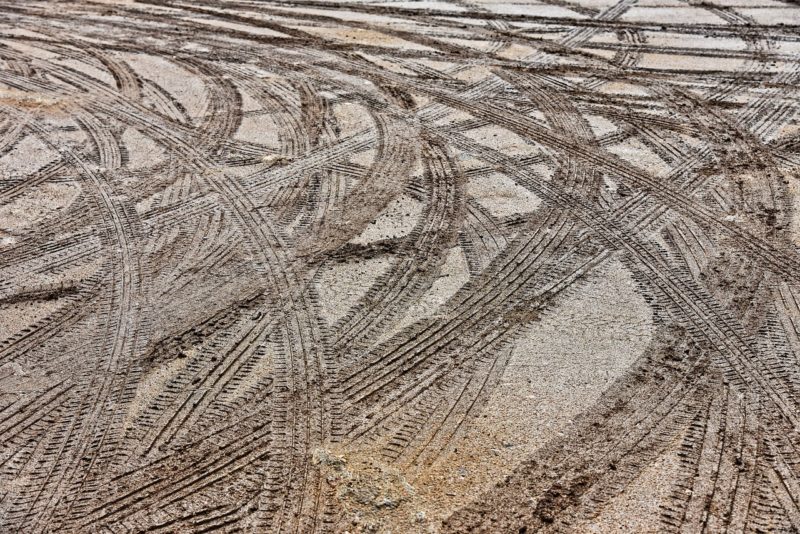
Look closely for previous trailer tire paths on the ground. 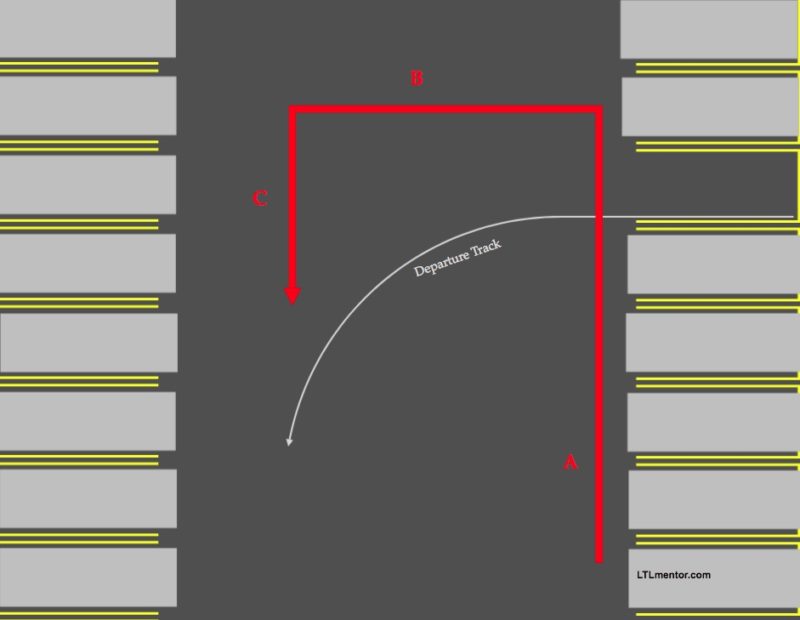
Tractor path in red. Helps lead to rear driver’s side Trailer tire path in white.
I have discovered through careful observation and experience that these paths are the secret to Setting Up correctly every time.
When I ask students what the primary goal of the Set Up should be, I get various answers. One of the better explanations I get is to have the trailer at a 45-degree angle. This answer holds for many Set-Ups. But, I have found instances where that is not the case. Furthermore, I have discovered locations where that thinking gets new drivers into trouble because of the allocated space.
The Home Depot in Collinsville, Illinois, is one of those locations. There is just enough room at this location to lure new drivers into trying to get the trailer at a 45-degree angle towards their Blind-side. Then they run out of space and get themselves stuck.
I believe, if there are exceptions to a rule, maybe there should be a new rule. Or, a new goal for Setting Up.
I came up with the concept of Departure Paths. Thinking of Departure Paths when planning your Set-Ups will never get you into trouble.
More about paths later.
Let’s get started with our first setup method : the “Z ” Set Up.
Terminology:
Blindside: setting up to back where the trailer and the target space are only visible from your passenger side window.
Set Up: getting the trailer in position to back into the target space.


